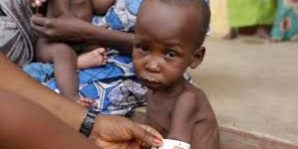Children living with HIV in Kenya are at risk of new infections as most of those tested positive continue to fail to keep the pace with other population groups in the treatment and suppression cascade. Although HIV treatments for children largely work, most of them are likely to be complicated, requiring pills and liquids, some of which are difficult to swallow and can taste unpleasant.
Health Experts continue to raise concerns regarding the number of new HIV infections among children in the country in what they call a public health emergency and have particularly highlighted the challenges in managing pediatric HIV as a bottleneck for the scale-up of treatment of children. Delays in the initiation of antiretroviral therapy (ART), high mortality rates due to high number of undiagnosed and untreated HIV-infected children, and lack of proper health facilities to pregnant mothers during pregnancy are some of the reasons for surge in new infections among children living with HIV.
Delays to ART initiation could mean high infection rates and death to HIV-infected children. According to Dr. Eliud Mwangi, a public health expert and country director Elizabeth Glaser Pediatric AIDS Foundation, delays to ART initiation have not only contributed to high premature mortality rates, but also increased further HIV transmission. Dr. Mwangi also attributes increased mortality rates to high number of undiagnosed and untreated HIV-infected children to delays to ART initiation.
The lack of proper health facilities to pregnant mothers during pregnancy could also compound children’s vulnerability to new infections. Dr Mwangi maintains that new infections are also due to the inability of pregnant mothers to access services of qualified health workers, increasing the chances of transmission during birth. The accessibility of essential and effective HIV services to pregnant mothers is thus necessary to achieve the suppression viral load and prevent mother- to-child transmission.
A combination of efforts is therefore needed to prevent new HIV infections among children, ensure that their mothers remain healthy and improve the diagnosis and treatment of HIV for children. First, HIV diagnosis, testing and treatment needs to be available closer to where the children most affected live. It is worth noting that when children living with HIV have access to treatment they do well and can live normal, healthy and happy lives, just like any other child. Second, community support systems are invaluable and need to be strengthened to allow them to effectively support children and care to keep them healthy and ensure that they have access to the HIV services they require.
More medicines specifically adapted to the needs of children need to be developed, and kept at an affordable price. To achieve this requires political will and investment by industry. Government, nongovernmental organizations, research partners, health experts and civil society need to advocate strongly for the development of child-friendly fixed-dose combinations to ensure that simple and effective treatment becomes rapidly available and accessible for all children in need.
BY DENNIS NYACHEO

